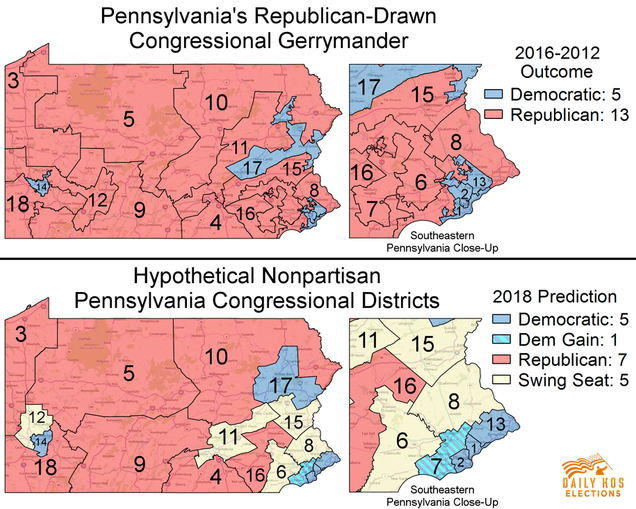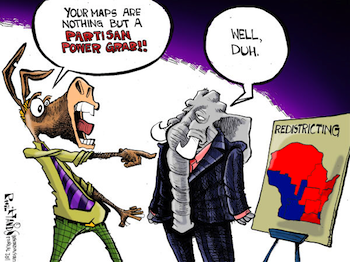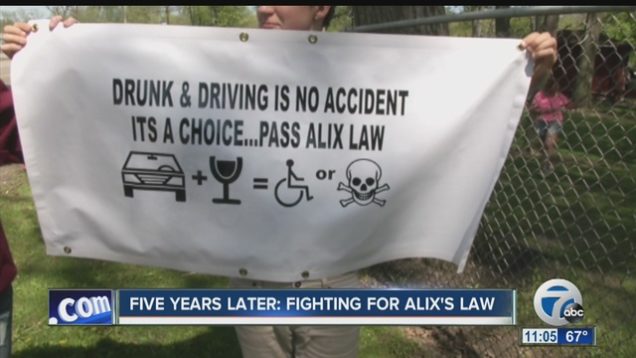Category: State Legislation
The Problems With Euclidean Zoning
Since the1926 landmark Supreme Court case, Village of Euclid v. Ambler Realty Co., 272 U.S. 365, it has been understood that the localities, municipalities, towns, and cities of the United States have the right to zone by dividing the town or community into areas in which specific uses of land are permitted. This is referred to as Euclidean zoning, and is considered the traditional and most common form of zoning in the United States. Euclidean zoning divides towns into districts based on permitted uses, and in so doing creates specific zones where certain land uses are permitted or prohibited. This can be helpful, as it enforces the separation of industrial land uses from residential land uses and can protect against pollution risks. However, Euclidean zoning has also exacerbated segregation issues, limited housing supply, and encouraged urban sprawl. Restrictions on minimum lot sizes, strict building codes, and other elements of Euclidean zoning have increased housing costs, limited new housing construction, worsened affordability issues, and increased the inequality divide in urban areas.
 In Massachusetts, Euclidean zoning is the basis of General Law chapter 40A, the state’s zoning act. Chapter 40A encourages separation of land uses, and gives localities the ability to institute zoning within their borders. Given that Massachusetts has 351 towns, there are a wide variety of zoning bylaws throughout the state, based on each towns’ preferences and personal histories. Over time, Massachusetts’ state government has realized that the Euclidean zoning instituted by towns, aided and abetted by chapter 40A, has created neighborhoods that are dependent on cars and unsustainable. In an era of increased concerns about climate change, global warming, and greenhouse gas emissions, many people struggle to decrease their carbon footprint because they cannot get to the most basic goods and services, like groceries, schools, shopping, and work, without access to a car due to the enforced separation of uses within zoning districts. Separation of uses leads to urban sprawl, which is “the expansion of human populations away from central urban areas into low density monofunctional and usually car-dependent communities.” Increased urban sprawl has created patterns of development with extended infrastructure systems, increased impervious surfaces, and increased adverse impact on natural resources.
In Massachusetts, Euclidean zoning is the basis of General Law chapter 40A, the state’s zoning act. Chapter 40A encourages separation of land uses, and gives localities the ability to institute zoning within their borders. Given that Massachusetts has 351 towns, there are a wide variety of zoning bylaws throughout the state, based on each towns’ preferences and personal histories. Over time, Massachusetts’ state government has realized that the Euclidean zoning instituted by towns, aided and abetted by chapter 40A, has created neighborhoods that are dependent on cars and unsustainable. In an era of increased concerns about climate change, global warming, and greenhouse gas emissions, many people struggle to decrease their carbon footprint because they cannot get to the most basic goods and services, like groceries, schools, shopping, and work, without access to a car due to the enforced separation of uses within zoning districts. Separation of uses leads to urban sprawl, which is “the expansion of human populations away from central urban areas into low density monofunctional and usually car-dependent communities.” Increased urban sprawl has created patterns of development with extended infrastructure systems, increased impervious surfaces, and increased adverse impact on natural resources.
In response to concerns about Euclidean zoning, urban sprawl, and decentralization, Massachusetts’ legislature passed General Law Chapter 40R in hopes of encouraging changes in zoning and development patterns that would combat the impacts of Euclidean zoning. Chapter 40R’s purpose is to encourage smart growth and increased housing production in Massachusetts. Smart growth is a development principle that “emphasizes mixing land uses, increases the availability of affordable housing by creating a range of housing opportunities in neighborhoods, takes advantage of compact design, fosters distinctive and attractive communities, preserves open space, farmland, natural beauty and critical environmental areas, strengthens existing communities, provides a variety of transportation choices, makes development decisions predictable, fair and cost effective and encourages community and stakeholder collaboration in development decisions.”
The issue is that Euclidean zoning, is so ingrained it will be difficult for towns to change their entire structure. Chapter 40R tries to fit smart growth within the existing zoning structure by allowing towns and cities to create smart growth zoning districts in appropriate areas of the town. The state legislature attempts to help towns and cities ease into smart growth concepts by encouraging the development of a comprehensive plan, an affordable housing plan, and a vision plan for their community.
Massachusetts attempts to boost smart growth practices beyond using Chapter 40R. First is to amend the local bylaw. Communities could revise and amend their zoning bylaws to incentivize or require smart growth practices. Within zoning bylaws, communities can allow land uses “by-right” or “as-of-right”, which would permit land uses in a particular district without discretionary review. As such, the use may be regulated but cannot be prohibited. This method is the most predictable and easiest permitting method, so towns may permit land uses they want to encourage, like smart growth, as “by-right” uses. Using the “by-right” approach to make smart growth strategies easier to permit can make smart growth a more attractive option to developers who otherwise would have little incentive to use smart growth techniques when they are costlier and more time consuming to implement.
Another technique to boost smart growth would be to encourage site plan review as a procedure for getting smart growth developments approved. Site plan review is a “coordinated review of a development application between several local agents or boards.” Site plan review can potentially increase the amount and technical nature of the information submitted to the local boards, so communities should use caution in adopting this review technique. Site plan review can be used for “by-right” applications, as well as for special permit applications. “By-right” applications are more complicated, as the use is “by-right” and the reviewing authority does not have the power to deny the use. Once an application is deemed complete, the reviewing authority cannot deny the application, although the reviewing authority “may impose reasonable conditions that further the purposes and standards of the zoning code.” In short, site plan review, “as attached to by-right uses, should be viewed as essentially an administrative review,” and should be viewed as an opportunity for local boards to get more information about a development, not as a way to regulate or deny development.
Special permits were used in Chapter 40A to allow increases in the permissible density of population or intensity of a particular use; authorization of Transfer of Development Rights of land within or between zoning districts; and review of cluster developments, pursuant to the Subdivision Control Law. For smart growth, special permits can be used to enable innovative approaches, allow flexibility, encourage partnerships between developers and the community, provide incentives, and require specific design standards. Special permits are also useful for areas that are previously developed, and can allow redevelopment of preexisting nonconforming uses to encourage infill and active use of developed areas.
Chapter 40R’s main focus is on the use of zoning districts to encourage smart growth. This is done in conformity with Chapter 40A by allowing the creation of new districts or the use of overlay districts. Overlay districts lay on top of existing zoning and can cover many underlying districts or portions of underlying districts. This gives communities the ability to be flexible in regulating uses of land.
Euclidean zoning has been the norm in America for over ninety years, and while it has valuable features, its rigidity can and has exacerbated issues ranging from social issues like segregation, to environmental issues like urban sprawl. Changing this will be difficult, as Euclidean zoning has support for planning purposes as well as for class purposes, but techniques like smart growth, new urbanism, and statewide comprehensive planning can help combat these issues. Massachusetts has made a start at this by enacting Chapter 40R, but still has work to do on the statewide level to incentivize local communities to change their zoning or to make it easier for these zoning changes to occur.
 Rachael Watsky graduated from Boston University School of Law in May 2018.
Rachael Watsky graduated from Boston University School of Law in May 2018.
Can Partisan Gerrymandering be Stopped?
Attention to partisan gerrymandering has heightened as the next wave of redistricting fast approaches and the Supreme Court’s 2017-2018 docket included two cases regarding the constitutionality of partisan gerrymander. Following the release of the 2020 census, states will set out to redraw their district maps. States redistrict at least every ten years. The 2010 redistricting results are described as the most extreme partisan gerrymandering in our country’s history. The 2010 maps have a heavy Republican partisan advantage, as evidenced by the 2012 election results with Republicans gaining a 234 to 201 seat advantage in the House of Representatives despite Democrats winning 1.5 million more votes than Republicans. The Republican partisan advantage has remained strong. The Brennan Center for Justice has predicted that in the 2018 midterm elections Democrats will need to win by a margin of nearly 11 points to gain a majority in the House of Representatives. Democrats, however, have not won by a margin this large since 1974. Following years of heavily gerrymandered districts, a supermajority of Americans have indicated support for the Supreme Court to bring an end to partisan gerrymandering, yet the Court failed to take action this year.
 Partisan gerrymandering is the carving of districts, into sometimes odd shapes, to benefit a political party’s electoral prospects. The term gerrymandering was coined after Elbridge Gerry, a Massachusetts’s governor, in order to describe an irregularly shaped district that looked like a salamander in an 1812 redistricting map he signed into law. As a result, partisan gerrymandering has been a defining feature of “American politics since the early days of the Republic.” While racial gerrymandering is unconstitutional, the constitutionality of partisan gerrymandering is an open question, as the Supreme Court has never struck down a map for partisan gerrymander.
Partisan gerrymandering is the carving of districts, into sometimes odd shapes, to benefit a political party’s electoral prospects. The term gerrymandering was coined after Elbridge Gerry, a Massachusetts’s governor, in order to describe an irregularly shaped district that looked like a salamander in an 1812 redistricting map he signed into law. As a result, partisan gerrymandering has been a defining feature of “American politics since the early days of the Republic.” While racial gerrymandering is unconstitutional, the constitutionality of partisan gerrymandering is an open question, as the Supreme Court has never struck down a map for partisan gerrymander.
Partisan gerrymandering seems to fly in the face of democracy. Voting is a fundamental right and electing who you want to represent you in office is a fundamental part of democracy. Legislatures that scheme, plan, and manipulate maps to benefit one party over another can undermine the purpose of democracy. Some of this scheming, planning, and manipulating is self-interested as legislatures try to protect incumbents and create safe districts, but can also serve the purpose of entrenching a political party’s majority until the next redistricting cycle. Both parties, Republicans and Democrats, have enjoyed the benefit of partisan gerrymandering when given the opportunity.
While the Supreme Court has indicated that some level of partisan gerrymandering may be unconstitutional, it has yet to explain when the constitutional line has been crossed. This term, the Supreme Court took up the question of partisan gerrymandering for the first time in more than a decade. The two cases before the Supreme Court were Gill v. Whitford and Benisek v. Lamone. The Supreme Court was asked to answer when partisan gerrymander crosses the constitutional line. Gill v. Whitford challenged a statewide map that has been deemed among one of the worst partisan gerrymandered maps in the country, with a significant Republican partisan advantage. Benisek v. Lamone challenged one congressional district in Maryland, with a significant Democratic partisan advantage. Some speculated that the Court took up both cases to deter an appearance that the Supreme Court prefers one party over the other. Another reason may be that the Wisconsin case was a challenge to a statewide map compared to the Maryland case challenging one congressional district.
The appellants attorney in Gill v. Whitford argued during oral arguments (see, page 62) that the Supreme Court is the only institution to put an end to partisan gerrymandering. The Court, however, sidestepped the entire issue by unanimously finding the Gill plaintiffs did not have standing, and that the challengers in Benisek had waited too long to seek an injunction blocking the district. The Supreme Court’s silence allows legislatures to continue to strategically gerrymander.
While the country waits on the Supreme Court to provide an answer on the constitutionality of partisan gerrymander, some states have attempted to take partisanship out of the process by using redistricting commissions, while others suggest that computers with algorithms should produce the maps. Yet, neither of these options individually seem to completely insulate redistricting from politics.
States have adopted redistricting commissions with the intention to remove partisanship from the redistricting process. However, this has often proved difficult to achieve, as finding non-partisan committee members is difficult and oftentimes the commission is appointed by partisan members, such as elected representatives and governors. States use different types of commissions and may only use a commission for redistricting the state map or congressional map. About 23 states use commissions for the state legislative maps and about 14 states use commissions for the congressional maps. The redistricting commissions can take the form of an advisory commission that makes suggestions to the legislature, a backup commission that draws the map if the legislature fails to redistrict, or as having the primary responsibility of drawing the map.
Even states that use independent redistricting commissions have had difficulties completely insulating the process from politics. For instance, in 2011, Arizona’s Independent Redistricting Commission chairwoman was removed by the Republican Governor and the Republican-controlled State Senate. The Governor accused the chairwoman of skewing the process for Democrats. The Arizona Supreme Court, however, reinstated the chairwoman and the United States Supreme Court upheld Arizona’s independent redistricting commission as a legitimate way to draw district maps. Although some states are moving toward redistricting commissions as a way to insulate the process from politics, these commissions are “only as independent as those who appoint it.”
While technological advances have been thought to help parties gerrymander more effectively, some suggest that similar technology could take politics out of the process with the proper algorithms. Brian Olson, a Massachusetts software engineer, wrote an algorithm to create “‘optimally compact’ equal-population congressional districts.” Olson prioritized the compactness requirement in an effort to reflect “actual neighborhoods” and because dramatically non-compact districts can be a “telltale sign of gerrymandering.” However, political scientists are skeptical about an algorithm prioritizing compactness, because it ignores other important factors, such as community of interest. Furthermore, someone needs to set the algorithm and there can be infinite map results. Thus, without very strict restrictions and guidelines, setting an algorithm and picking the map can still be an inherent gerrymander.
Removing politics completely from the redistricting process appears to be nearly impossible. Partisanship is deeply entrenched in the process, and dates back to even before the coined term “gerrymander.” Redistricting commissions do not always guarantee a partisan free redistricting effort, and while technology offers an alternative to human map drawing, humans are still making the final decision. Some combination of these efforts may help to lessen the amount of politics used in the redistricting process or lessen the appearance of partisanship, but are unlikely to completely end partisan gerrymandering all together.
 Mikayla Foster anticipates graduating from Boston University School of Law in May, 2019.
Mikayla Foster anticipates graduating from Boston University School of Law in May, 2019.
Arizona’s Teacher Strikes: The End or Just the Beginning?
For six school days in late April and early May, teachers across the state of Arizona walked out of their classrooms to demand better pay, more classroom funding, and other concessions from governor Doug Ducey (R) and the Republican-controlled state legislature. These teachers, inspired by similar walk-outs in West Virginia, Oklahoma, and Kentucky, brought their “outside voices” together to call for change. In the early morning hours of May 3, Ducey signed the new state budget that gave teachers a raise. But, the bill fell short of meeting the walkout organizers’ other demands. Some have said the #RedforEd movement failed because it did not deliver on all of the group’s demands. Still, this strike was just the beginning.
It is important for me to be transparent about my personal connections to this issue. My mother is a life-long public school teacher, who recently retired after over 25 years of teaching in schools across Arizona. As part of Teach for America, I spent three years teaching in the Littleton Elementary School District, the same district where #RedforEd organizer Noah Karvelis teaches, although Mr. Karvelis started teaching after I left for law school. During my first two years of teaching, I earned my Master’s degree in secondary education from Arizona State University. And while I moved across the country to attend law school in Boston, I have kept in touch with many of my former colleagues in Arizona.
The issues with education funding in Arizona started in 2008, while the country was reeling from the recession. As states across the country scrambled to fix their budgets, Arizona’s schools took a big hit. Ten years later, while the economy has recovered, funding for Arizona’s schools didn’t. According to a report by the state’s auditor, schools were receiving less inflation-adjusted dollars per student in 2017 than they were in 2008. During that time, the state has seen its income limited by a number of tax cuts, the largest of which have gone to corporations. Despite promises, economic research has indicated that the cuts have not stimulated economic growth, resulting in decreasing government revenue. All this has translated into horrible conditions in many schools across the state.
The combination of the lowest teacher salaries in the country, low education funding, and successful walkouts in other states urged Arizona’s educators to take action. The group Arizona Educators United, which started the #RedforEd movement, laid out five demands: 20% raises for teaching & certified staff; pay raises for classified staff (janitors, paraprofessionals, secretaries, etc.); restoring classroom funding to 2008 levels; no new tax cuts until Arizona’s per-student funding reaches the national average, and annual raises for teachers until salaries reach the national average.
The movement’s hashtag, #RedforEd, started as a way to draw attention to the lack of education funding. Teachers began with “walk-ins” – they arranged to arrive at school early and stand just outside their school’s gates, wearing red shirts and waving signs. The walk-ins were aimed at building community support. Teachers also protested outside the capital during a “teach-in” on March 28 after the school day ended. The walk-ins continued for another month and, when the state legislature wasn’t receptive, the strikes began on Thursday, April 26.
After nearly 13 hours of debate, Governor Ducey signed a new state budget that included nearly $273 million for teacher pay raises. That will only amount, however, to a 9% raise this year. Governor Ducey has plans to provide 5% raises in each of the next two years, in addition to the 1% raise teachers saw at the start of the last school year. But, this plan has a big problem. The legislature passes a new budget each year. So, while Ducey has “plans” to provide a 20% raise by 2020, that plan is completely out of his control because the decision ultimately lies with the legislature.
There are a number of other concerns that the teachers have with Ducey’s deal. The budget does nothing to raise per-pupil spending, increase pay to support staff, or reduce the state’s student-to-counselor ratio. While the American School Counselor Association recommends a ratio of 250 students per counselor, Arizona averages 924 students per counselor. A Democratic representative, Mitzi Epstein, had offered an amendment that would mandate a 250:1 student-to-counselor ratio, but the amendment failed.
While the budget itself certainly contained far less than #RedforEd supporters had hoped for, the fight is far from over. There are a number of ballot measures this November that could take Arizona’s education system in radically different directions. First, Proposition 305 asks voters whether they want to keep Senate Bill 1431 in place. That bill expanded what are formally called “Empowerment Scholarship Accounts” (“ESAs”) but more commonly known as school choice “vouchers.” While the two terms are not mere synonyms because they allocate money somewhat differently, the net result is that ESAs may be used by parents to send their child to private schools (including religiously affiliated schools). The money for ESAs is taken from public schools which, as stated, are grossly underfunded.
Organizers are also seeking petition signatures to place another initiative on the ballot related to education funding. The “#InvestInEd” ballot measure, which has not been given a number yet because it is not yet formally on the ballot, calls for tax increases on income over $250,000 for individuals or $500,000 for married couples. The web page in support of the ballot measure states that “[t]he higher rates are only paid on the income above those amounts.” Perhaps most importantly, funding secured through a ballot measure such as this one “cannot be taken away by the legislature.”
Finally, the #RedforEd movement has even driven some teachers to take more direct action. After spending nearly a week at the Capitol pleading with legislators to take action, several educators are running for elected positions themselves. The article by the Arizona Capitol Times identified former teachers running as both republicans and democrats for positions in the state house and senate, as well as local school boards.
The flurry of activity around education funding in Arizona makes a bold statement: this issue is not going away. While the strikes may be over and the new budget is signed, teachers have made clear that this will be a big issue come November. Beyond the ballot initiatives and teachers running for elected office, Governor Ducey is up for reelection. The #RedforEd movement unquestionably fell short of their goals – the last answer on the Arizona Educators United “FAQ” page makes that clear. But, to say that the movement died when the strikes ended is to underestimate the political will of angry teachers. Time will tell, but I think the movement for education improvement in Arizona is far from over.
David Bier anticipates graduating from Boston University School of Law in May, 2019.
Mental Illness and Gun Violence: What’s Really Responsible?
You’ve heard it all before. In fact, you’ve heard the same arguments repeated back and forth so many times you have memorized them yourself. The cycle goes like this: There’s a mass shooting, then in the tragic aftermath, the liberal and conservative pundits begin repeating their arguments left and right. Usually, on the conservative right there are calls for mental health reform and on the left, liberals agree that we need to address mental health, but point to gun access as the key issue to prevent these tragedies from happening. The rest of us, the general population, are left somewhere in between. We point fingers like everyone’s to blame, but we take action like nobody is responsible. That is to say, we take very little action at all.
Although this cycle has repeated itself to the point of feeling like a broken record, it’s important that we not get stuck like one. After all, the definition of insanity is doing the same thing over-and-over again while expecting a different result. Where some blame the mentally ill and some blame guns, it is important to step back and reframe our arguments to see the issue of gun violence in a different light. Maybe the solution, as is often the case, lies somewhere in between.
The tragedy in Parkland has energized this debate to unprecedented levels, but has also brought with it many familiar arguments. In particular, recent calls from President Trump to strengthen limitations on the ability of the mentally ill to access firearms gives us cause to reevaluate his premise that mental illness is associated with gun violence. President Trump’s critique is founded on a commonly shared belief among the majority of Americans. According to a Pew Research poll in 2017, 89% of people across the political spectrum favor placing increased restrictions on the ability of the mentally ill to purchase firearms. This commonly held belief across the political spectrum forces us to ask ourselves: What is the real relationship between mental illness and gun violence?
What do the Numbers Say?
The evidence suggests that we may be biased when it comes to our perceptions of the mentally ill and the potential for persons dealing with mental illnesses or disorders to exhibit violent tendencies. In fact, a 2013 national public opinion survey (p.367) found that 46% of Americans believe that persons with mental illness are “far more dangerous than the general population.” However, the public perspective is vastly distinct from reality. Another study (p.241) demonstrates that between 2001 and 2010, “fewer than 5% of the gun-related killings in the United States… were perpetuated by people diagnosed with mental illness.” People are far more likely to be killed by a person with a gun that does not have a mental illness, than someone that does have a mental illness.
While mental illness is not strongly correlated with gun violence, there are other conduct measures that appear to be strong predictors of such violence. Three conduct measures in particular that are powerful are past acts of violence/criminal history, a history of domestic violence, and substance abuse.
First, with regard to a history of violence, the American Psychology Association issued a report (see p.8) that concluded based on longitudinal studies, “The most consistent and powerful predictor of future violence is a history of violent behavior.” One article from Wisconsin Public Radio affirms this trend in reporting that for gun homicides in Milwaukee about, “93 percent of our suspects have an arrest history.” Although the Milwaukee sample is small and not entirely representative of the entire United States, such a high correlation is worthy of our attention in considering factors for reevaluating our gun policies.
Second, when it comes to the correlation between domestic violence and mass shootings or gun violence, the evidence is even stronger. According to a study quoted in the New Yorker, “Of mass shootings between 2009 and 2013, 57 percent involved offenders who shot an intimate partner and/or family member.” Further, a report from Everytown for Gun Safety shows that persons with a history of domestic violence account for “54 percent of mass shootings between 2009 and 2016.”
Third, with regard to substance abuse, a study (p.242) by Dr. Jonathan Metzl, an often quoted figure in studying the causes of gun violence in the United States, found that, “[A]lcohol and drug use increase the risk of violent crime by as much as 7-fold, even among persons with no history of mental illness.” According to the same study, “serious mental illness without substance abuse is ‘statistically unrelated’ to community violence.” In other words, substance abuse increases an individual risk of violence in general, including an increased risk of gun violence.
States Offer Pragmatic and Nuanced Solutions
However, correlation does not equal causation. Many of the current studies on the causes of gun violence and mass shootings face limits (p.240) in this particular regard. However, the low statistical correlation indicated in multiple studies between mental illness or disorders and gun violence are informative. The fact that there are other risk factors that are strong predictors of violence generally and gun violence specifically point to where our attention is likely better directed in trying to rework gun laws in a manner that will work for everyone.
The Giffords Law Center to Prevent Gun Violence points to one such unique legal mechanism adopted in Oregon, Washington and California, which have adopted laws for Extreme Risk Protection Orders (“ERPOs”). These laws allow family members or law enforcement officers to petition a court to keep guns away from someone going through a crisis. The laws are geared toward the principle that family members are best able to gauge changes in an individual’s behavior that could pose a serious risk of harm. Petitioners under these laws still have the burden of providing sufficient proof that the individual poses a risk of danger to themselves or others. ERPOs are also only temporary, but may vary in length. For longer protective orders, more compelling evidence must be offered that the person poses a risk of harm to themselves or others.
Oregon offers another pragmatic solution in its closing of the “domestic abuser loophole” through passage of a recent state law. Under the 1996 Domestic Violence Offender Gun Ban, domestic abusers are banned from owning or possessing a gun. However, the federal ban only applies to someone if they are married, living with, or have a child with the victim of the abuse. The wording of the law creates the “domestic abuser loophole,” which means that someone who is not living with their significant other and does not meet any of the other mentioned criteria, but who abuses their significant other, can still buy a gun. Oregon’s new law prohibits anyone convicted of a crime of domestic violence from owning or possessing a gun, regardless of whether or not that person lives with their significant other.
These new state laws are just examples of a number of other pragmatic and nuanced policy solutions that are geared toward preventing future gun violence while avoiding burdensome restrictions on the Second Amendment rights of the vast majority of Americans. Such solutions demonstrate our capacity to tackle the problem of gun violence in new and creative ways, while still preserving individual freedoms. Finally, these laws represent effective solutions that are based on empirical evidence about true risk factors for gun violence and not on ill-founded stigmas. A path forward on fixing our gun laws exists, but to move forward we must set aside our preconceived notions and work together to promote innovative solutions that protect both our rights and our safety.
 Nicholas Stone graduated from Boston University School of Law in May 2018 and plans to practice in Portland Oregon.
Nicholas Stone graduated from Boston University School of Law in May 2018 and plans to practice in Portland Oregon.
New York State’s Missed Opportunity On Early Voting Propositions
It’s no secret that the United States has one of the lowest voter turnout rates of any established democracy. Data provided by the Pew Research Center shows that out of the 35 members of the Organization for Economic Cooperation and Development (OECD), the United States places 28th for voter turnout. Only a little more than half of the U.S.’s voting age population participated in the 2016 elections. One reason for low voter participation that reformers consistently point to is the fact that Election Day is on a Tuesday in November.
Americans have been voting on the Tuesday after the first Monday in November since 1845 when Congress decided to set a national election day. In the 1840s, elections on a Tuesday made sense. People traveled by buggy and would make the journey into town for the market which was generally held on Wednesdays. By setting election day on Tuesday, Congress made it convenient for people to vote because they were in town anyways. However, today many people work on Tuesdays which makes less it a less practical day of the week to have an election than it was in 1845.
One way states have dealt with the difficulties created by Election Day falling on a Tuesday has been to develop provisions for early voting. Early voting allows people to cast a ballot in person at either an elections office or other specified location at some point before the federally designated Election Day. As of 2017, 37 states allow registered voters to vote during a specific period of time before Election Day, and 22 states provided an option to vote during the weekend. Early voting begins in some states as early as 45 days before the election or as late as the Friday before election day, although the average early voting start date is 22 days before Election Day. Generally early voting ends a few days before Election Day.
New York is one of only thirteen states that does not allow early voting. It does have absentee ballots, but allows voters to use them only if they are out of the county or otherwise unable to vote on election day as a result of illness or disability. New York has dismally low voter participation rate, and in the 2016 election New York state ranked 42nd in voter turnout with only about 59% of eligible voters voting. For years there have been attempts to update New York’s voting laws, but resistance from the Republican controlled Senate has led to the failure of these bills.
However, that may soon change. Since early 2017 there appears to be increased attention to and political will for election reform. In January of 2017, former Attorney General Eric Schniederman introduced the New York Votes Act which included provisions for automatic registration of eligible voters, early voting, and no-excuse absentee voting. The bill was sponsored by the Chairman of the Election Law Committee, Assemblyman Michael Cusick (D-Statent Island). The bill is currently in committee.
In January of 2018, Senator Brian Kavanagh (D-Brooklyn and Lower Manhattan) introduced Senate Bill S7400A which would create an eight-day early voting period that would be funded by the state. The bill is currently in the election law committee, and has received support from Democrats including Democratic Conference Leader, Andrea Stewart-Cousins (D-Yonkers), a cosponsor of the bill. Senator Stewart-Cousins called New York voter turnout “extremely embarrassing” and stated that “Our bills will modernize voter registration, implement early voting, protect voters' rights, and cut red tape which has kept far too many New Yorkers from exercising their constitutional right.”
Republicans have also introduced their own election reform legislation. Senate Bill S7212 sponsored by Republican Senator Betty Little (R- Queensbury) would allow early voting beginning 14 days before the general election. Senator Little remarked “The people this would help the most are the families, people who are working with children in school, with sports activities and homework…They intend to vote; they just don't get there that day." Assemblywoman Nily Rozic (D, WF-Fresh Meadows) sponsored the Assembly version of this bill.
On February 12, 2018, drawing on aspects of both Senator Kavanagh’s bill as well as Senator Little’s bill, Governor Andrew Cuomo announced a 30-day budget amendment which would provide approximately $7 million in FY2019 for counties to run early voting programs. Governor Cuomo’s plan calls for counties to provide early voting opportunities during the twelve days prior to Election Day, and requires that voters have at least eight hours on weekdays and five hours on weekends to cast their vote. Counties must also provide at least one early voting site for every 50,000 residents, the location of which will be determined by the bipartisan County Board of Elections.
Several groups have expressed support for early voting including labor unions, good government organizations, and the League of Women Voters. Proponents of early voting claim that if people were able to vote at a time that was more convenient for them, there would be broader participation. However, some opponents of early voting have argued that early voting may actually cause lower voter turnout because people will not feel the same social pressure to vote as they do when they are only able to vote on one day. Additionally, people who vote early may not have the same information as people who vote on Election Day because advertising and campaigning intensifies as Election Day approaches. In the past Republican leaders in the Senate have expressed a hesitancy to change the system, though the spokesman for Senate Republican Leader John Flanagan (R- Suffolk County) recently stated “Our conference has supported electoral reforms in the past, and we would expect to do so again…But we have not discussed that specific proposal recently."
Whether New York will ever adopt early voting is still unsettled. The legislature voted on the Governor’s budget in late March, but the Senate majority removed the early voting provisions. In mid-April, the Assembly passed election reform bills to authorize 7 day advance voting, overhaul the voter registration process and allow for online registration. The Senate referred the bills to the Election Committee, and then on June 20, the session came to a quiet end without any action on voting. Speaker Heastie does not anticipate any more legislative meetings until the new legislature is seated in January 2019. Perhaps the elections will break the logjam in the Senate and early voting in New York will become a reality.
 Meghan Hayes anticipates graduating from Boston University School of Law in May 2019.
Meghan Hayes anticipates graduating from Boston University School of Law in May 2019.
Massachusetts’ “Death By Dealer” Bill is the Wrong Opioid Policy
On January 30, 2018, the Massachusetts Joint Committee on the Judiciary heard testimony on S. 2158, An Act Updating Laws Relating to Dangerous Drugs and Protecting Witnesses. Despite its relatively innocuous title, the bill, proposed by Governor Charlie Baker, represents a substantial scaling up of the War on Drugs in the Commonwealth.
Like many other states, Massachusetts is in the midst of a public health crisis. The opioid-related death rate in the state has surpassed the national average, with a nineteen percent increase in overdose deaths between 2015 and 2016. In addition, three-quarters of opioid-related deaths in 2016 involved fentanyl, a synthetic opioid that is roughly 50 times more potent than street heroin. As opioid overdoses decimate local communities, officials are understandably investigating ways to curb the epidemic, and one solution, to which legislatures are increasingly turning, entails drastically increasing punishment for drug crimes that result in death.
 For decades, federal prosecutors have been able to pursue stringent penalties in cases of “death by dealer.” Passed by Congress in 1988 in response to the highly publicized death of a University of Maryland basketball star who overdosed on cocaine just days after being drafted by the Boston Celtics, the so-called “Len Bias” law sets mandatory minimum sentences for selling drugs that lead to another person’s death. More recently, twenty states have adopted analogous laws, and several others have “McGyvered” existing homicide statutes—e.g., reckless homicide and felony murder—to prosecute the same offense. With Governor Baker’s bill, Massachusetts joins a number of additional states with pending legislation that would allow prosecutors to charge drug sellers with murder or manslaughter.
For decades, federal prosecutors have been able to pursue stringent penalties in cases of “death by dealer.” Passed by Congress in 1988 in response to the highly publicized death of a University of Maryland basketball star who overdosed on cocaine just days after being drafted by the Boston Celtics, the so-called “Len Bias” law sets mandatory minimum sentences for selling drugs that lead to another person’s death. More recently, twenty states have adopted analogous laws, and several others have “McGyvered” existing homicide statutes—e.g., reckless homicide and felony murder—to prosecute the same offense. With Governor Baker’s bill, Massachusetts joins a number of additional states with pending legislation that would allow prosecutors to charge drug sellers with murder or manslaughter.
While these laws may seem like a good idea at first—as a way to cripple the organized drug trade and to give prosecutors new tools to attack upper echelon drug traffickers—the criminalization of accidental overdose has a number of possible unintended consequences. Massachusetts legislators should carefully consider these effects that may backfire and exacerbate an already dire situation.
Although proponents argue that drug-induced homicide law will prevent future drug trafficking, there is broad consensus that harsh sentences have minimal, if any, deterrent effect. Contrary to conventional wisdom, studies have found that, among individuals facing drug-related charges, variations in prison and probation time have no impact on recidivism rates. The focus on supply reduction also seems misplaced: many studies suggest that market demand for drugs drives a continuous “replacement effect,” such that incarcerating drug dealers simply “open[s] the market for another seller.” Instead, such policies may inadvertently increase drug-related violence and lead to dangerous fluctuations in the contents of street drugs.
Drug-induced homicide laws also risk undermining Good Samaritan policies. As overdose deaths skyrocket, 37 states, including Massachusetts, have enacted laws to reduce the legal barriers to calling 911 in the event of an emergency. Most of the laws are limited to drug possession, however; they do not encompass drug selling or homicide. Although popular imagination places drug users and drug sellers in separate buckets, reality proves far blurrier: drug users frequently participate in the supply side of the market—whether by actively selling drugs or by helping in some way, such as acting as a lookout—in order to support their habits. Ostensibly intended to prosecute high-level drug suppliers, in practice, these statutes often ensnare family, friends, and acquaintances who supplied the drugs and who themselves may have a substance use disorder. In Wisconsin, an analysis of the 100 most recent drug-induced homicide prosecutions found that “nearly 90% of those charged were friends or relatives of the person who died, or people low in the supply chain who were often selling to support their own drug use.”
While prosecutors talk about “aggressively prosecuting those people that peddle the poison in our community,” users counter that “every drug-induced homicide charge that is made sends a ripple through the using community to not call 911 and might result in somebody else's death.” In fact, a recent study found that a majority of surveyed drug users feared calling 911 during an overdose due to concerns about criminal repercussions. Overall, then, treating overdose deaths as crime scenes and prosecuting overdose witnesses as perpetrators of murder or manslaughter limits the potential benefits of Good Samaritan legislation and other efforts to reduce overdose deaths.
Finally, punitive approaches, which place the blame for overdose deaths on drug sellers, focuses on the wrong problem. Criminal sanctions have the benefit of immediate visibility—they make it appear to constituents that policy makers are doing something. Public health approaches, on the other hand, are virtually invisible because, if successful, the harms that they target will never materialize. This “prevention paradox” often leads policy makers towards individualized, instantly tangible solutions to complex problems such as drug-induced homicide laws.
The opioid crisis is, fundamentally, a structural issue, rooted in poverty, lack of opportunity, and social isolation. Structural issues require structural solutions. Legislators are understandably grabbing at any and every straw to quell what seems like an intractable problem, but, at a time when much of the country seems poised to approach problematic substance use as a health issue, rather than a criminal one, it is critically important that Massachusetts policy makers carefully consider the ways in which S. 2158’s drug-induced homicide provision might backfire.
Rather than focusing on misguided “quick fixes” that further criminalize vulnerable populations, legislators should, instead, redirect their energies towards public health strategies with demonstrated effectiveness in reducing fatal overdoses. These include implementing comprehensive, evidence-based addiction prevention initiatives; increasing overdose education and naloxone access; promoting the use of medication-assisted treatment for opioid use disorders; and expanding and maintaining insurance coverage for addiction treatment. The United States has been trying to arrest its way out of substance use and addiction for decades, and today’s crisis attests to the futility of that approach. If our policy makers are serious about ending the opioid epidemic in the Commonwealth, they need to shift their focus from policing and prisons to people and public health.
 Alexandra Arnold anticipates graduating Boston University School of Law in May 2019.
Alexandra Arnold anticipates graduating Boston University School of Law in May 2019.
The End of Dams: Removal and River Restoration
America has a love-hate relationship with dams. As a nation, America has built “on average, one dam per day since the signing of the Declaration of Independence.” Individually, dams have existed in America since long before the states revolted against Great Britain. Massachusetts has the oldest dam listed in the National Inventory of Dams, the Old Oaken Bucket Pond Dam (see slide 21) in Plymouth County, which was built in 1640. The dams started small, as mill dams on small streams for specific towns, but have grown in size to hundreds of feet tall, damming some of the largest rivers in America. Dams are often used (see slide 14) for hydroelectric power, irrigation, flood control, and the vaguely defined “recreational use.” Despite this love of “biggering and biggering”, America has failed to maintain many of the dams constructed, leading to the dangers we now face on a local, state, and federal level. Dams are also harmful to rivers, causing a depletion of fisheries, degradation of river ecosystems, and degradation of river water quality. This article will briefly discuss what Massachusetts has done to address these issues, mainly by removing dams that are a hazard.
In Massachusetts, a failure to maintain dams has led to crises where towns have been evacuated at the threat of a dam bursting. An example is the Whittenton Pond Dam, in Taunton, Massachusetts, where in 2005, after days of rain, the 170-plus-year-old dam nearly collapsed. Close to 2,000 residents were evacuated due to fears of a six-foot high wall of water rushing through the town. Thankfully, the local government and the state were able to mobilize an emergency response team that stabilized the dam; at a cost of over $1.5 million. If the dam had collapsed, the damage, physically and financially, would have been far greater.
Massachusetts has approached dam removal in multiple ways. After the Whittenton Pond Dam emergency, the Office of Dam Safety was rejuvenated and given funding to evaluate the nearly 3,000 dams, in varying states of disrepair, spread across the state. Massachusetts passed “An Act Further Regulating Dam Safety, Repair and Removal”, emergency legislation to increase dam safety and encourage dam removal, in late 2012. The Act passed with support from multiple parties and interests, including the Nature Conservancy, municipal associations, water suppliers, engineering professionals, and other conservation organizations. This law gave various commissions and agencies more authority to respond to dam repair and removal issues, and set up ongoing funding for the repair or removal of dams, seawalls, and other water infrastructures. The various authorities must submit an annual report on the status of the dams in the state. The Massachusetts Office of Dam Safety, the Division of Ecological Restoration, and other agencies are required to assess dams, ensure dam owners have emergency action plans (EAPs), ensure that dam owners address safety issues, establish an inspection process and schedule for dams, and assess fines for noncompliance. Massachusetts provides grants for design costs of removal projects, which is an additional incentive to encourage dam owners to remove dams in noncompliance or that no longer perform the function for which they were built.
Massachusetts G.L. c. 29, §2IIII established the Dam and Seawall Repair or Removal Fund, which operates under the Secretary of Energy and Environmental Affairs and offers grants to local government bodies, charitable organizations, and private dam owners to finance inspection, repair, and removal projects for dams, seawalls, jetties, revetments, retaining walls, levies, and other means of flood control. Often, it is less expensive to remove an old, dilapidated structure than to repair it, so owners will perform removal projects rather than repair projects. Along with removing the dam, the legislature has delegated power to administrative agencies to help encourage restoration of the river after the dam is removed. One of the earliest dam removal projects in Massachusetts (see page 118) was intended to increase public safety and river accessibility for recreation, but also to increase bordering vegetated wetland on the river and to improve and restore access to cold-water habitat.
So far, Massachusetts has avoided removing dams that were built for flood control purposes, opting instead to encourage repairs. However, Massachusetts considers dams built for nearby industrial use, other hydropower purposes, irrigation, or recreational use as fair game for removal. This decision is consistent with policy for many states and the federal government. This policy is especially relevant when the use has been abandoned, public safety is at risk, or the dam is in disrepair and the owner either cannot be found or refuses to pay to maintain the dam.
Thankfully, Massachusetts is well on its way to removing the more problematic dams and restoring its rivers and streams. The Division of Ecological Restoration has assisted multiple dam owners with the removal and restoration process, including the Whittenton Pond Dam that nearly collapsed in 2005. After the passage of the Dam Safety Act, the Whittenton Pond Dam was removed in 2013-2014 as part of an initiative by the Division of Ecological Restoration and the Mill River Restoration Project. The Morey’s Bridge Dam had a fish ladder constructed rather than have the dam removed. Two other dams on the Mill River, the Hopewell Mills Dam and the West Britannia Dam, have either been removed or are in the process of being removed. Upon completion, over 50 miles of stream habitat and 400 acres of pond habitat will open up, rejuvenating the cold-water fisheries and allowing river herring (an endangered species), American eel, and other migratory and resident fish to enter the ecosystem. Although there are objections to the removal of these historical dams, as some communities consider the dam an inherent feature of their town, objections can be assuaged by the preservation of portions of the dam that do not interfere with the river system.
The Division of Ecological Restoration’s actions are an important change to Massachusetts’ environmental policy. Most of the environmental protection laws are focused on maintaining the status quo, and on protecting the water resources from impacts. Removing dams, however, has a proactive and positive impact on water resources by changing the river or stream. The process of permitting the dam removal still takes longer than it should. The Division of Ecological Restoration and other agencies have proposed changes to the state permitting process, allowing aquatic restoration projects like dam removal to go through a permitting process that is easier and more streamlined, which can reduce costs and shorten permitting timelines. This is needed so that dams are removed before they become a hazard to the surrounding area. A faster permitting process will also help dam owners who cannot afford to maintain their dam for an indeterminate amount of time.
Dams have been an integral part of America’s history, however, the time has come to end the era of dam construction. Dams do not have an eternal lifespan, and often no longer serve the purposes for which they were originally built. The costs of maintaining degraded dams often exceed those of removing the dam and restoring the river system. The benefits of dam removal go beyond just the immediate area of the dam, and removing a dam, when planned in conjunction with removing or updating other dams on the river system, can help bring river ecosystems back to life. Massachusetts’ legislature began the process with the Act Furthering Dam Safety, Repair, and Removal, and should continue to fund the grants for removing dams around the state.
 Rachel Watsky graduated from Boston University School of Law in May 2018 and plans to practice environmental law.
Rachel Watsky graduated from Boston University School of Law in May 2018 and plans to practice environmental law.
Alix’s Law: Is the 7th Time the Charm?
On the night of July 8, 2011 18 year-old Alexandria “Alix” Rice died on the side of the road in a town just outside of Buffalo, New York. Alix was riding her longboard home from work around 11:20 pm when a drunk driver hit her and sent her flying 150 ft. from the point of impact, breaking both of her legs, some ribs, and lacerating her cerebellum. The driver, Dr. James Corasanti, a 55 year-old gastroenterologist sped away from the scene leaving Alix to die. Alix did not die alone though. Another motorist and his wife stopped to help Alix after seeing a car speeding towards Alix and then hearing an “almighty bang,” a sound the witness described as “ungodly.” Other residents of the usually quiet street reported hearing a “loud thump,” a “horrific noise,” and a “jarring sound” and many came out to help Alix. Dr. Corasanti however, did not stop. He drove home, cleaned Alix’s blood and flesh from the front of his $90,000 BMW, deleted some text messages, called an attorney, and 91 minutes later, turned himself into police.
At the police station Corasanti refused to submit to a blood test to determine his blood-alcohol level. Five hours later law enforcement officers were able to get a court order for Corasanti’s blood, which registered a .10 blood-alcohol content, .02 above the legal limit. Prosecutors charged Corasanti with second-degree manslaughter, second-degree vehicular manslaughter, leaving the scene of an incident without reporting, resulting death, tampering with physical evidence, and misdemeanor driving while intoxicated. During the trial experts testified that Corasanti’s BAC was likely between .14 and .21 when he hit Alix Rice. Evidence showed Corasanti had been texting and speeding when he hit Alix, though there was disagreement as to whether Corasanti crossed over into the bicycle lane where Alix was riding or if she had crossed into the road when she was hit. Yet, despite the significant weight of the evidence, Corasanti was acquitted of all charges except the misdemeanor DWI.
Dr. James Corasanti was drunk, texting, and speeding when he hit Alix Rice and left her for dead on the side of the road. How was he able to avoid all felony charges, including leaving the scene of an incident without reporting? The answer; a loophole in the law that only requires a driver to stop if they know or have reason to know that a person has been injured, or that damage has been done to property as a result of a motor vehicle accident. The current law gives drivers an incentive to leave the scene of an accident because in order to convict, prosecutors must prove that anyone in the driver’s position must have known that they hit a person. Corasanti and his defense team were able to convince the jury that there was reasonable doubt as to whether Corasanti knew that he hit a person. Corasanti claimed that his BMW was designed to cancel out noise and therefore he did not hear the impact of his car hitting Alix’s body. Dr. Corasanti was sentenced to one year in jail despite killing Alix Rice.
 Lawmakers and the public were outraged. Looking for a way to close the loophole that allowed Corasanti to receive such a minimal sentence, New York State Senator Patrick Gallivan introduced Alix’s Law, Senate Bill 7577-A in 2012. Alix’s Law is designed to prevent drunk drivers from hitting something or someone, leaving the scene, and then being able to claim that they did not know that any injury or property damage occurred. The bill holds drunk drivers responsible for leaving the scene of an accident. Alix’s Law, adds the following language to the current statute:
Lawmakers and the public were outraged. Looking for a way to close the loophole that allowed Corasanti to receive such a minimal sentence, New York State Senator Patrick Gallivan introduced Alix’s Law, Senate Bill 7577-A in 2012. Alix’s Law is designed to prevent drunk drivers from hitting something or someone, leaving the scene, and then being able to claim that they did not know that any injury or property damage occurred. The bill holds drunk drivers responsible for leaving the scene of an accident. Alix’s Law, adds the following language to the current statute:
“A person operating a motor vehicle in violation of section eleven hundred ninety-two of this chapter that came into contact with a person, real property, or personal property, that resulted in damage to real property or to the personal property, not including animals of another, shall be presumed to have known or have cause to know of such contact and of such damage, unless such person shows that they would not have known or had cause to know of such contact and of such injury regardless of intoxication or impairment by the use of alcohol or a drug.”
The new language creates a rebuttable presumption that an intoxicated driver who is involved in an accident knows that they have caused damage or injury and therefore they must stop and report the accident to police. The current law is the opposite. In order to convict someone for leaving the scene of a fatal accident, the prosecution has the burden of proving that the driver knew or should have known that they hit a person. This law makes it easier to prosecute people for leaving the scene of an accident they caused while driving drunk. Alix’s Law passed in the Senate on June 19, 2012 and was sent to the Assembly where it died in the Transportation Committee.
Alix’s law was reintroduced in 2013, 2014, 2015, and 2016. Each year Alix’s Law has received unanimous, or near unanimous support from the Senate. In 2016, Alix’s Law passed 58-0 in the Senate before it stalled in the Assembly. In 2017 Sen. Gallivan introduced Alix’s Law for the 6th time as S. 3393-A. The same bill was introduced in the Assembly as A.1944 by Assemblywoman Crystal Peoples-Stokes. Alix’s Law passed 61-0 in the Senate in 2017, but again died in Assembly. Alix’s law was returned to the Senate, and as of February 6, 2018, it was back in the Senate Transportation Committee.
It is not clear why Alix’s Law has yet to move out of committee in the Assembly after passing unanimously on six different occasions in the Senate. Assemblywoman Peoples-Stokes told reporters that counsel for the committee has advised that Alix’s Law is unnecessary and that the law already covers what Alix’s Law is trying to change. However, a former acting Erie County District Attorney points out that the law would change the incentives for people to leave the scene of an accident, and would help close the loophole that allowed Dr. Corasanti to avoid felony charges. Additionally, there have been a number of high profile hit-and-runs in the past few years, and so it may be time for the legislature to take action and to address the problem. Whether or not Alix’s Law will ever pass the assembly is yet to be seen, but Sen. Gallivan and the Rice family continue to advocate for Alix’s Law and are committed to keeping Alix’s memory alive.
 Meghan Hayes anticipates graduating from Boston University School of Law in May 2019.
Meghan Hayes anticipates graduating from Boston University School of Law in May 2019.
A Lackluster Response to the 64,000 Opioid Overdose Deaths Per Year
The Opioid Epidemic stands apart from past drug crises this country has experienced. Not only is this the deadliest drug crisis the country has experienced, this epidemic is a result of a “perfect storm.” A shift in the medical field to focusing on the treatment of pain changed opioid prescribing practices and encouraged an increase in marketing practices of opioid pharmaceutical companies, resulting in America being the world’s leader in opioid prescriptions. Congress, through the Bipartisan Task Force to Combat the Heroin Epidemic, made some progress addressing opioids during the Obama Administration, but with the change in administration the efforts seem stalled.
In 2015, doctors prescribed enough opioids to medicate every American around the clock for three weeks. Even as doctors started to prescribe fewer opioids, in 2016 enough opioids were prescribed to fill a bottle for every adult in America. The increase in opioid prescriptions came at the same time as there was a shortage of workers in addiction and recovery, allowing for only 10 percent of Americans with substance use disorder to receive the necessary treatment. This “perfect storm” created a massive swell in opioid addictions. As it became more difficult to obtain prescription opioids, addicts sought a stronger high and many turned to illegal opioids, such as heroin and fentanyl. Nearly 80 percent of Americans addicted to heroin started with misuse of prescription drugs.
The death of Philip Seymour Hoffman in 2014 from a heroin overdose put a spotlight on the crisis. Despite recognizing that there was a nation-wide epidemic, the country took a lackluster response and overdose deaths continued to spike. The National Center for Health Statistics, Centers for Disease Control and Prevention, and the National Institute on Drug Abuse have reported only an increase in the overdose deaths. The U.S. government estimated about 64,000 overdose deaths for 2016. With the epidemic claiming a record number of lives per day, all of the 2016 presidential candidates spoke about personal stories or plans of action for combatting the epidemic. Most of the candidates agreed that the federal government should provide resources to the states to help combat the epidemic with a focus on treatment. Some of the other candidates focused on stopping the flow of drugs coming across the border, including now President Donald Trump.
In March 2017, President Trump established the President’s Commission on Combating Drug Addiction and the Opioid Crisis. The Commission members include Former Governor Chris Christie of New Jersey, Governor Charlie Baker of Massachusetts, Governor Roy Cooper of North Carolina, Former Congressman Patrick Kennedy of Rhode Island, Professor Bertha Madras, and Florida Attorney General Pam Bondi. On November 1, 2017, the Commission issued a final report with more than 50 recommendations (see, page 7). They included increasing data sharing of state-based prescription drug monitoring programs, changing privacy regulations to allow healthcare providers easier access to information about patients with substance use disorder, equipping all law enforcement officers with naloxone, and enforcing the Mental Health Parity and Addiction Equity Act. In addition, the Commission recommended a national multi-media campaign to help fight the epidemic, more federal funding for the states, drug courts in every federal district court, and enhanced penalties for drug trafficking to reduce the supply of opioids.
Even prior to the issuance of the report, President Trump declared the Opioid Epidemic a public health emergency. The President stated “[t]he best way to prevent drug addiction and overdose is to prevent people from abusing drugs in the first place. If they don’t start, they won’t have a problem,” but until his 2019 budget proposal the President’s Administration failed to request funding to combat the epidemic. Congressman Patrick Kennedy, a vocal critic of the limited action taken by the President, explained, “[t]he emergency declaration has accomplished little because there’s no funding behind it. You can’t expect to stem the tide of a public health crisis that is claiming over 64,000 lives per year without putting your money where your mouth is.”
The President’s focus has been on increasing funding for law enforcement. On January 10, 2018, the President signed the INTERDICT Act which provides funding to U.S. Customs and Border Protection to assist with the detection and interception of illicit fentanyl. Increased enforcement may be part of the solution, but some Congressional leaders believe there is more than just one solution and have said the epidemic must be addressed on many fronts.
In 2015, Representatives Ann McLane Kuster and Frank Guinta from New Hampshire, a state that has the highest fentanyl overdose deaths per capita, created the Congressional Bipartisan Task Force to Combat the Heroin Epidemic. From its inception, the task force has gained members from both parties, and now has more than 100 members. The Task Force pushes a legislative agenda, as well as holds informational hearings. Under President Obama’s Administration, the Task Force was able to pass several pieces of legislation, including the 21st Century Cures Act, and the Comprehensive Addiction & Recovery Act (CARA). The CARA Act is currently the main source of funding for the opioid epidemic, but the funding will run out in 2018. In response to the “perfect storm” that created this epidemic, CARA has six pillars of response, including prevention, treatment, recovery, law enforcement, criminal justice reform, and overdose reversal.
On January 10, 2018, the Task Force released its 2018 legislative agenda. The agenda includes bills focusing on prevention, treatment, law enforcement, and prescribing practices. Several of the bills include federal funding and grants. After the Task Force called for an increase in funding to combat the epidemic, Congress passed $6 billion in the 2018 budget. Some have been critical of the amount of funds dedicated to the epidemic, and compared it to the $24 billion a year that was dedicated to addressing the HIV/AIDS crisis.
On February 9, 2018, Purdue Pharma, the maker of OxyContin, announced it had laid off employees whose job was direct promotion of the drug to doctors. Purdue Pharma is currently facing dozens of lawsuits for deceptive marketing practices. It is unclear if the company’s change in promotion practices will alter prescribing practices of doctors, who are already familiar with the drug. To make a significant impact on the epidemic, real change needs to happen outside of Purdue Pharma’s promoting practices.
The U.S. Surgeon General issued a public health advisory encouraging Americans to routinely carry naloxone on April 5, 2018, which is the first advisory issued since the 2005 warning against drinking alcohol while pregnant. Access to naloxone would come in part from the $6 billion in the 2018 budget which has allocated grants for naloxone so states can hand it out for free; however, there is also reliance on naloxone manufacturers keeping costs low. The Surgeon General explained that naloxone can be a “touch point that leads to recovery.” However, more in line with the Trump Administration, the Surgeon General believes that the involvement of law enforcement is necessary to solving the epidemic.
A tough-on-crime approach and focus on providing funding strictly for law enforcement, as President Trump has encouraged, is not the answer. The country responded to the crack cocaine drug crisis with a tough-on-crime approach and strict sentencing guidelines. That led to extraordinary incarceration rates, especially for African Americans, and failed to address the issue of addiction as a disease. The country should learn from its mistakes, take a more well-rounded approach, as suggested by the Surgeon General and the Bipartisan Task Force, and implement a long-term solution. Congress must not only provide funding for law enforcement, but should increase treatment and recovery for substance use disorder, implement better prescription drug monitoring programs, start country-wide drug court programs, and educate Americans and doctors about the disease of addiction and risk of opioids. People are dying every day in this country from opioid overdoses, and every time Congress delays we lose another life.
 Mikayla Foster anticipates graduating from Boston University School of Law in May 2019.
Mikayla Foster anticipates graduating from Boston University School of Law in May 2019.
Data Breaches: A Growing Problem, but Will Congress Act?
Data breaches are a growing and ongoing concern. As of the modern economy relies more heavily on web-based services, hackers throughout the world are finding innovative ways to exploit this new technology for their own gain. The big question is: will Congress act to address the problem?
Recent data breaches have drawn the ire of members of Congress, including the Equifax hack and Facebook’s privacy issue with Cambridge Analytica, largely because of perceived wrongdoing or an inadequate response on the part of the breached company. Data breaches are tricky because, on the one hand, the breached company is the victim of a criminal act which should be investigated and prosecuted. But, on the other hand, to the extent that a company is breached because it was negligent or even reckless in failing to patch a known security flaw, some kind of legal consequence seems appropriate. Crafting a legislative response to address data breaches is an intricate matter that begins with an important question: as a matter of federalism, are data breaches a state or federal concern?
A vast majority of states have laws on the books requiring a breached company to take some kind of action after a security breach. These laws define “personal information” and require that notice of the breach is given to either breached consumers or a state government entity such as the Attorney. States wielding their police power to regulate the response to data breach incidents makes sense because data breach litigation is usually focused upon a theory involving negligence, privacy invasion, or breach of a fiduciary duty (Solove & Citron, at 8). Each of these causes of action are firmly rooted in state law. Yet, the patchwork approach to data breach legislation leaves many companies scrambling to comply with very different laws in the various jurisdictions where individuals with breached data reside.
Yet, many data breaches end up litigated in federal court. The most common reason for this is the Class Action Fairness Act (28 U.S.C. §§ 1332(d), 1453(b); “CAFA”), which provides a federal forum to claims where the parties maintain minimum diversity (at least one plaintiff located in a state different from at least one defendant) and an amount in controversy of at least $5 million. Because many data breaches impact a disparate plaintiff class residing throughout the country, and because the sought-after remedy is much larger than $5 million, these cases are frequently removed to federal court.
Other data breaches are litigated in federal court from the start, with causes of action arising under federal statutes. Claims are often brought under Fair Credit Reporting Act (15 U.S.C. § 1681 et seq., “FCRA”), which requires companies that send information to credit reporting agencies to take “reasonable procedures” to protect the confidentiality of sensitive personal information. The federal government also regulates data security in several industries, including the healthcare industry through the Health Insurance Portability and Accountability Act (Pub. L. 104–191, “HIPPA”) and the financial services industry through the Gramm-Leach-Bliley Act (Pub. L. 106–102, “GLBA”). Lastly, the Federal Trade Commission (“FTC”) regulates some data security matters pursuant to the agency’s authority to prosecute unfair competition.
These statutes make clear that the federal government has some role to play in the data security sphere, and with good reason – data security can quickly become a matter of national security. First, many data breaches are thought to involve state-sponsored actors, implicating international law and sovereignty concerns. Next, data breaches can give rise to other federal crimes, including identity fraud (Internet Research Agency Indictment; Counts 3-8 at ¶¶ 96-98). When that identity fraud was apparently perpetrated with an intent to interfere in America’s free and democratic elections, the concern is only exacerbated.
So, what can Congress do to address this issue? While the problem is very complex and requires an equally complex response, Congress often prefers to address problems in a piecemeal fashion. There have been two bills put forth, one from Senators Nelson, Blumenthal, and Baldwin, and another from Senators Warren and Warner. It is important to note that the two bills cover different topics under the greater umbrella of data privacy – they are not mutually exclusive and they are not merely two different solutions to a single problem.
Senator Nelson’s bill, called the Data Security and Breach Notification Act, would require the FTC to establish minimum “policies and procedures regarding information security practices for the treatment and protection of personal information.” § 2(a)(1). This bill includes provisions that exempt financial institutions in compliance with GLBA, but it covers a large number of different organizations and industries. It also creates a series of new penalty provisions authorizing fines up to $5 million for infractions. Notably, § 7(a) dictates that this bill would preempt state information security laws. This provision is sure to be unpopular with certain states, especially those (like Massachusetts) that have been proactive in regulating data at the state level (see the testimony of Sara Cable, Assistant Mass. AG, to the U.S. House of Representatives’ Financial Services Committee, Part II.C, page 4).
Senator Warren’s bill has a narrower scope, addressing only “credit reporting agencies” with annual revenue “not less than $7 [million]”. § 2(4). After the Equifax breach announced in the Fall of 2017, the credit reporting agencies themselves became the focus of new scrutiny. Given the immense volume of sensitive information that these agencies possess, and their critical role in our financial system, it makes sense that these entities should satisfy more exacting standards. Senator Warren’s bill would establish an “Office of Cybersecurity” within the FTC, and that office would be charged with promulgating regulations and investigating non-compliance with those regulations. §§ 3(b)(B), (D). The bill also contains a fairly restrictive notification requirement – mandating that covered credit reporting agencies alert customers within 10 days after a breach. § 4(a). Such notification requirements present interesting policy question. On the one hand, the sooner customers know of a breach, the sooner they can take action to prevent identity theft and fraudulent use of their finances. On the other hand, in countries like Australia that have recently implemented mandatory notification laws, companies have expressed concern that such a notification would amount to an “admission of guilt” that may come back to haunt the company in subsequent litigation.
Though there are many issues underlying data privacy and security, one thing is clear – something must be done. Because these bills address different areas of cybersecurity, they should both pass. Even if that were to happen, much more needs to be done. States undoubtedly have an important role to play, but it is much faster and more efficient for federal legislation to address an issue like this that impacts citizens nationwide. But, what precisely needs to be done, however, is a much more complex question. The 115th Congress has been derided for its lack of action on many important issues, including an immigration fix for DACA recipients and addressing firearms in the aftermath of the Parkland shooting. So, will anything actually happen? Only time will tell.
 David Bier plans to graduate from Boston University School of Law in May 2019.
David Bier plans to graduate from Boston University School of Law in May 2019.









